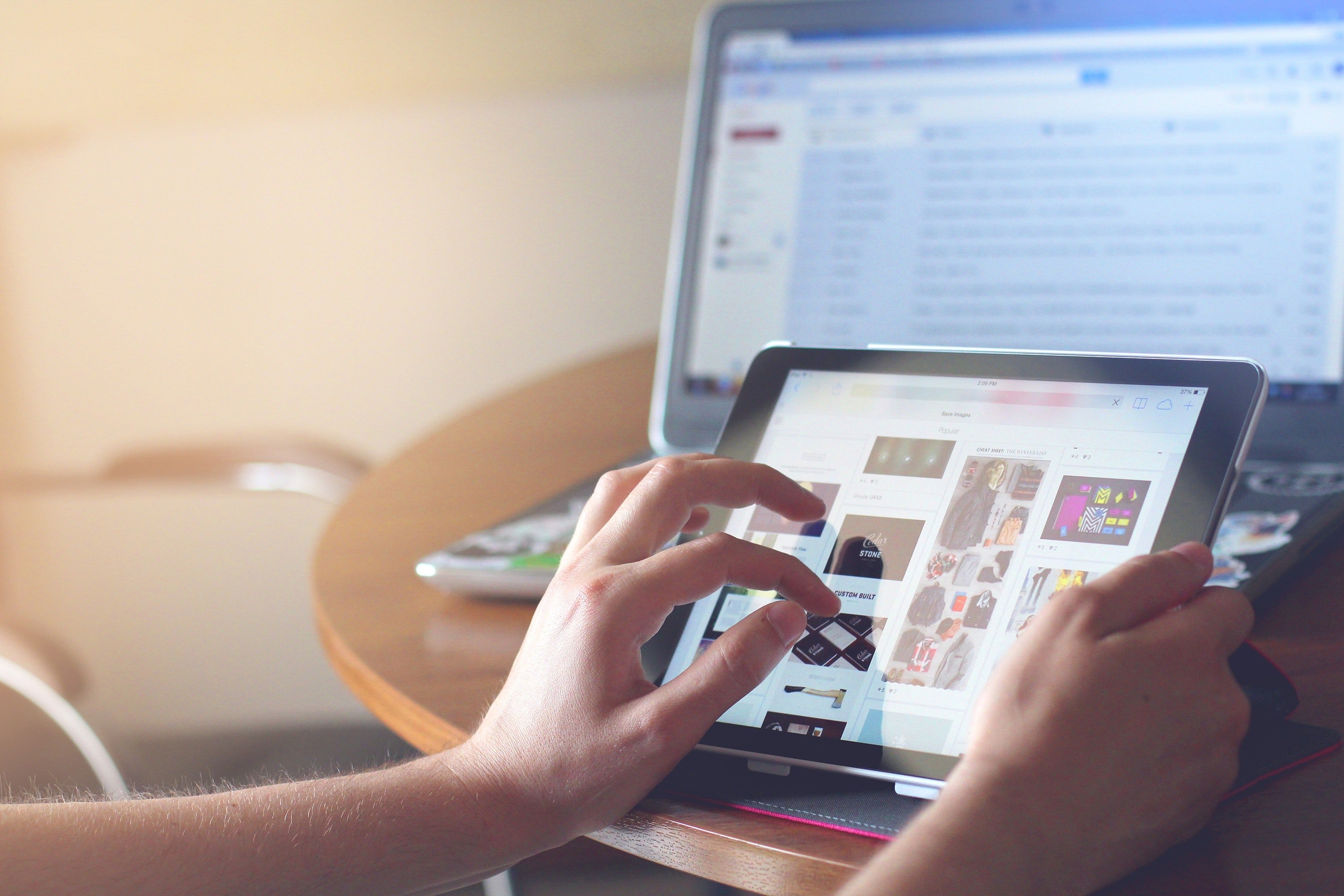The new Apple iPad Pro is a fantastic computer. And yes, I mean computer. It is very much the ultimate implementation of the concept of iPad first introduced by Steve Jobs in 2011. With the power of the A12X Bionic chip, edge-to-edge display, iOS 12.1, and support for the new Apple Pencil, the new iPads can be used to transform how business people live and work. The 12.9” device I’m using to write this on is, no doubt in my mind, the best iPad ever. But, I’m also multitasking and reading a few reviews of the new devices that leave me scratching my head.
Some experienced tech journalists land squarely in the “The hardware is impressive, but the software doesn’t allow for real work” camp. Then - and here it comes - they add something to the effect of “Apple, you need to add a touchpad or mouse quick” and “this device without a fixed keyboard is not useful enough”, as well as questioning how any computing device that has no external storage or support for computer-like accessories is going to deliver for users. Overall, some (and thankfully it’s still a minority) continue to say that the iPad and other similar devices, are not “fit for work”.
Rather than digging into the exact process of how the iPad multitasking (which it does very well) and text selection (which as I edit this article reminds me how much I prefer to the mouse selection approach), and connections to external systems work, it’s more valuable to look into how we got here, and why it’s time to let users have the opportunity to work – yes, work - in ways that really fit their needs, experience, and productivity goals.
Before we do that, let’s step back a little. There is a school of thought being pushed by many in the media that the only way to make any kind of electronic device physically larger than a smartphone successful as a computer is to have it mirror the user experiences that people have been using on their “computers” for the last 30 years. Take a screen, keyboard, mouse and CPU unit, piece it all together (and make it fit on the lap or the desk), and you have a functional computer. But, could this just be a throwback to the past? People still feeling comfortable in the Windows, Icons, Menus, Pointer (WIMP) user experience that took over computing in the 1980s? And sure, for many, it’s natural and expected that there is a lot of familiarity and comfort from the 30 years of experience defining what computing should be all about.
However, a lot has changed since 2007. The introduction of the iPhone and its multi-touch user interface has given us 11 years to come to terms with a new way of thinking about how we access, and interact with, our computers. But iOS has done a lot more than just introduce a multi-touch UI. iOS takes a different approach to many of our everyday computing tasks, and has built these approaches through the years of focusing on how real-world users operate. For example, the method to copy and paste text in iOS is very similar to how it’s done on a PC/Mac, but also different in the physical approach to how the initial selection is done. Whilst that different approach may seem ‘clumsy’ or ‘slow’ to some people, to others (I certainly fall in this camp), these approaches are actually, in many ways, faster and more accurate than having to use the legacy click and drag method.
Moreover, now with billions of people around the world making use of new mobile operating systems (both iOS and Google’s Android), for many, it should be perfectly respectable to choose a parallel computing experience, and in fact, to prefer the new approach.
This same principle applies to the often criticised lack of physical connectivity of tablets (and smartphones) in that they lack ports or systems to connect external USB thumb drives or other peripherals that have been used in computing for decades. Again, it’s time we recognize that many users prefer to transfer files using the Cloud, eliminating the need for external drives.
The iPad as a PC?
Back to the iPad Pro. Granted, the iPad Pro uses a version of iOS that is very similar to the iOS used on the iPhone, but with a few productivity and UX tricks added to take advantage of the larger screen. The iPad Pro is a device that is designed to be used for everyday tasks in the same way that say a laptop or desktop PC or Mac is intended to be used, but that doesn’t mean that iOS must conform to the PC/Mac approach.
By pushing the concept that Apple should add the PC/Mac UX and accessory approaches to iPad to make it useful goes against the idea that computing is about personal and organizational productivity that empowers each of us, individually, to be our best.
And if you think about it, once we start adding a mouse or trackpad, permanently connected keyboard and external storage connection, we are pretty much saying that we reject the concept that there is a different (and some would, again, say better) way to solve computing tasks. Some of us are old enough to remember the way many corporations tried to turn the first PCs into dumb terminals with green screens connected to the mainframe, rejecting the new paradigm of personalized computing. Or, the original reaction to the iPhone user experience for Blackberry users who could not accept that a new approach could be as powerful as the one they had used for a decade.
We need to recognize that millions of people around the world are choosing devices like iPad to be their only computing device. And these people are seeing this new approach deliver real increases in productivity in their personal and work lives - transforming how they work, learn, communicate, share, and generally take advantage of our highly digital world. For them, the iOS user experience is preferable to the PC experience, in the same way that personal computing using Windows UX was preferable to the green screen/terminal approach of mainframe computing in the 1980s, or keyboard on phone approaches of Blackberry in the 2000s.
For one, I like the way the iOS interface works on iPad. It makes me more productive in many of my everyday tasks compared to a PC/Mac. I prefer to be able to choose the experience and model that works for me, that makes me better at what I do, rather than being locked into an experience just because it’s how it was done before there was another option.
Hopefully, at the end of the day, all this shouting is just about journalists looking for something to write about, not merely about their personal experience impacting their view of alternative approaches to computing, and if that’s the case, we need people with more of a view to the now than the past.
Viva la Difference
The world is big enough for there to be multiple approaches to computing that can be recognized as different, but valid. And sure, it’s ok to compare and contrast these approaches and to have an opinion about which of those approaches works best for each of us. But trying to make us all the same, and come back to the lowest common denominator - that just happens to be the old style PC/Mac experience - is not the right way to delight people.
For the future, it will be interesting to see how Apple takes the iPad hardware and software forward, and whether they end up agreeing that a mouse, keyboard and external storage connection are critical to their users. But for me, my message is clear - Apple, please do not put a mouse on the iPad.


